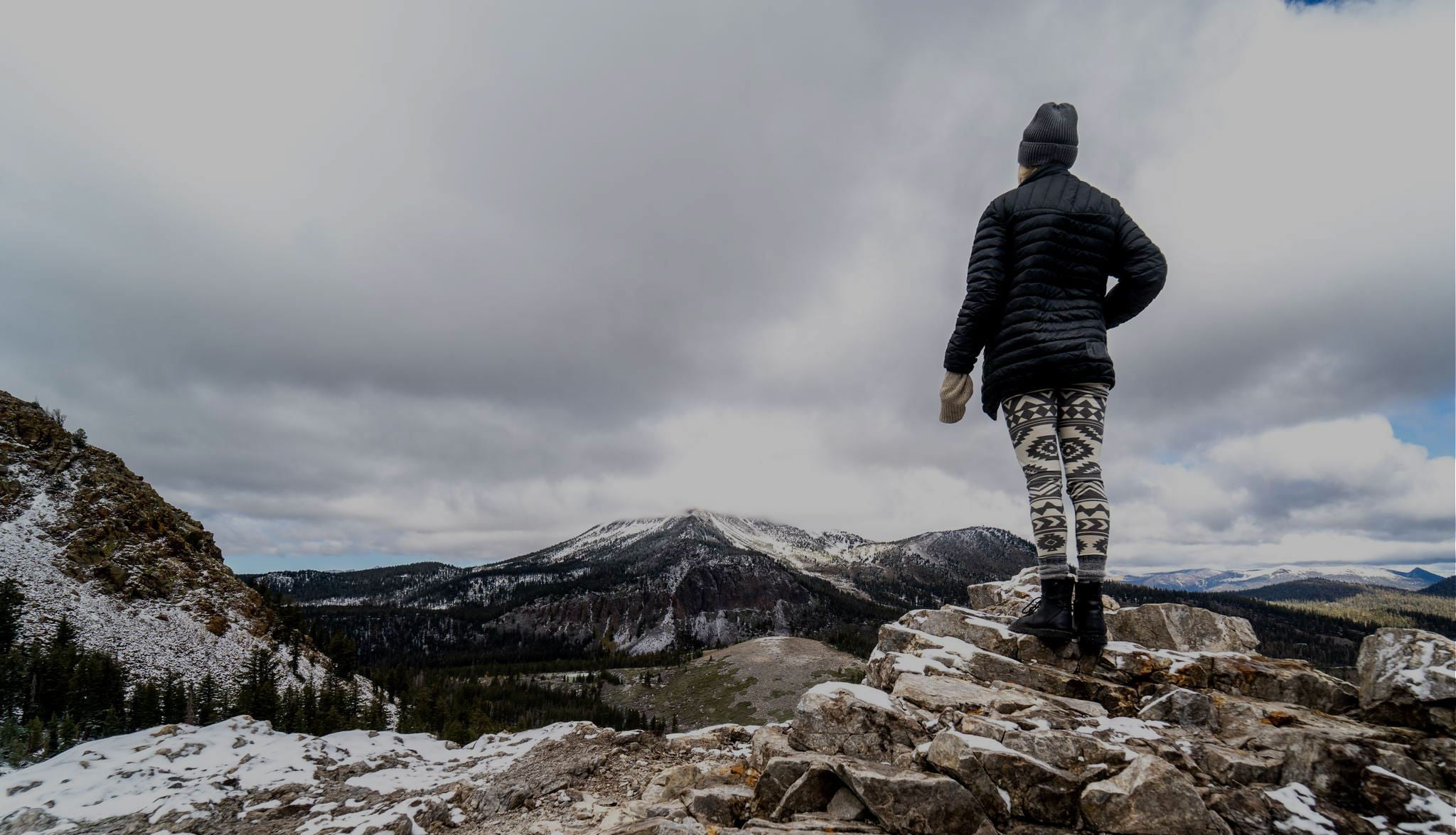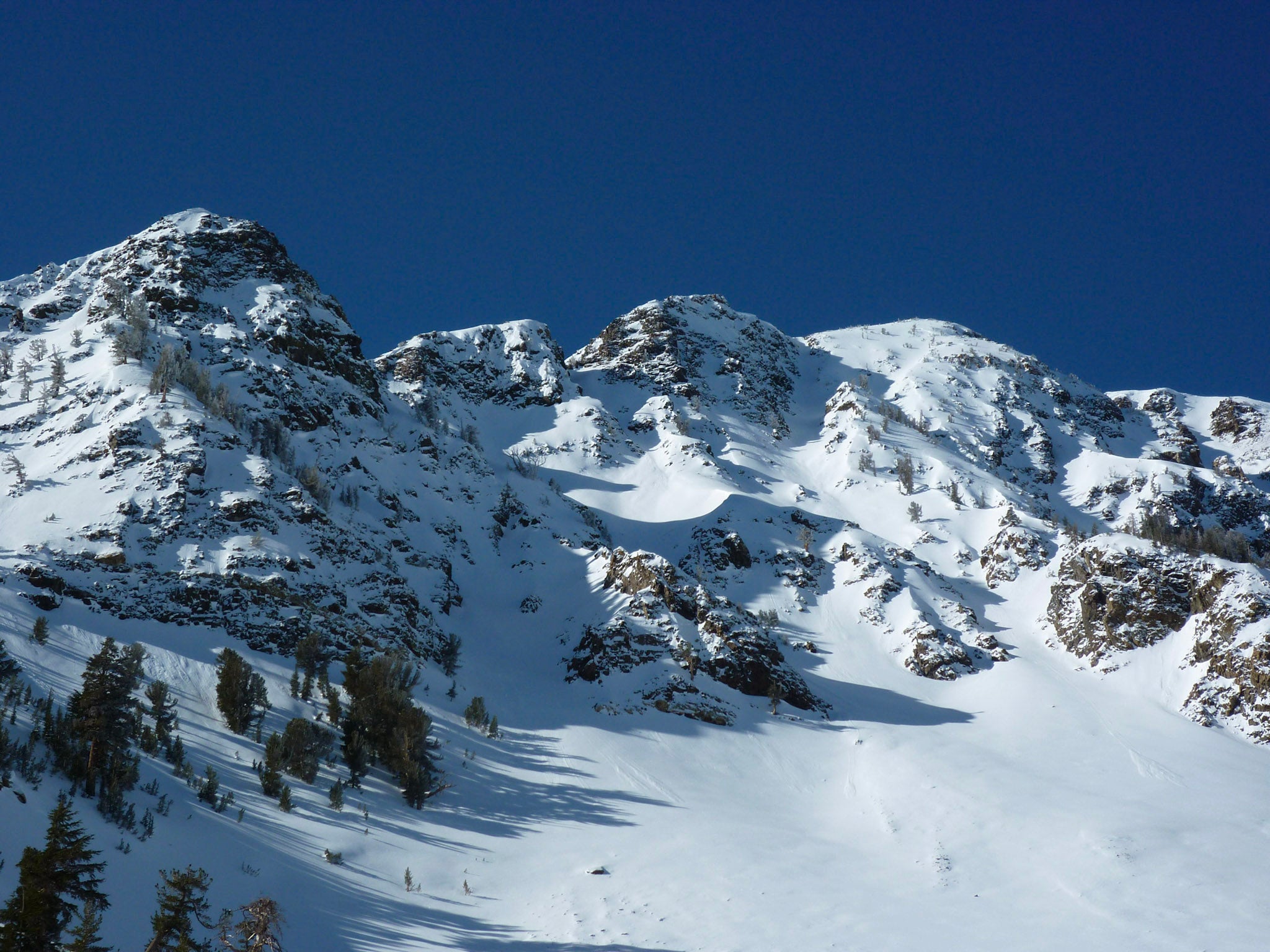Six Backcountry Skiing Safety Tips Before You Go

Editor’s Note: Ridge Merino emphasizes that there are many inherent risks in going into the backcountry. Anyone who goes out should have the proper knowledge, equipment, a good partner and a plan that can be changed if conditions change.
Backcountry skiing offers something entirely different from skiing inbounds at a resort. Without the clanging of the chairlifts, dodging other skiers on the way down, and having to find a parking spot, skiing in the backcountry can deliver unmatched peace.

Photo: Nate Greenberg
But backcountry skiing can’t be taken lightly; the risks and dangers are abundant. Learning how to travel in avalanche terrain is a skill that takes years to develop, and the risks of not having that skill can be fatal. Here’s a best case scenario if you happen to get caught in one.
Still, we see backcountry skiing on the rise, so we caught up with our local backcountry skiing authority, Nate Greenberg, to share a few steps to take if you want to get into backcountry skiing.
Nate is the President of the Eastern Sierra Avalanche Center and the co-author of Backcountry Skiing California’s Eastern Sierra. Nate and his co-author Dan Mingori just released the third edition of the guide book this year.
Before you pick up the guide book, here are six backcountry skiing safety tips to get prepared:

Photo: Josh Bishop
1. Become a strong skier and learn the techniques in the resort.
Get comfortable skiing all types of terrain in every condition safely. Ski trees in powder, breakable crust and firm snow. Make sure you’re comfortable skiing steep terrain above exposure. Nate also recommends learning how to make a kick turn and how to side slip. “You should master these things in a resort where you’re safer,” Nate says.
If you’re not an advanced skier, it’s not time to go backcountry yet. “Anything you’ll ski in the backcountry is the equivalent of skiing black diamond or harder at the resort,” Nate says. "You can find easy terrain, but it’s not groomed and it’s not controlled, so it’s inherently more risky."
Photo: Jeff Russell
2. Take an intro to backcountry course or clinic.
Many ski resorts are starting to offer a level of instruction before avalanche courses to get prospective backcountry skiers familiar with what they’ll experience. Mammoth Mountain has offered an Intro to Backcountry Touring course that covers touring/safety equipment, skinning, kick turns, downhill transitions, skating and downhill ski practice with certified guide instructors. Some mountain town ski guide companies offer courses like this as well.
These courses are a great way to check out if you’re really going to like backcountry skiing. “If you don’t like going up and exercising, you’re not going to like it,” Nate says. “70 percent of the time you’ll be hiking uphill and often skiing less than perfect conditions while going down.”

Photo: Nate Greenberg
3. Take an avalanche course (Avy 1).
As Powder Magazine says, everyone should take an Avy 1 course. Most mountain towns have a local guide company that runs these courses throughout the winter, typically over a weekend. The gold standard is AIARE 1, a three-day intro to avalanche hazard management, which helps you prepare for a backcountry trip, understand basic decision making and learn rescue techniques to use if an avalanche occurs.
But Nate warns that an Avy 1 course is just the beginning of a long process to stay safe. “An Avy 1 course is designed to give you enough info to scare you and queue up some future conversation,” he says.
Photo: Jeff Russell
4. Find a mentor or use a guide company.
Nate is the first to admit that a book isn’t a stand-in for a mentor. “There’s just so much to learn and it’s hard to develop those skills in a safe way,” he says. “Having someone who can point you in the right direction and keep you from making bad decisions early on is super, super helpful.”
A good mentor can guide you through everything from what base layers to wear, how to approach decision making and communication effectively, choosing what line to ski, and how to effectively manage terrain. If you can’t find a mentor, Nate recommends going out with a guide company. It’s worth the money to invest in professional guidance.

Photo: Nate Greenberg
5. Walk before you run.
Progression is so important, especially in backcountry skiing. Stick to super easy terrain as you get started, and always have a plan to retreat and save the mission for another day. Conditions can change in an instant, and being safe should always be the priority.
Get the systems down in places where you’re comfortable. “Don’t throw yourself into the deep end because you’ll drown pretty quickly,” Nate warns.
6. Establish solid communication with your group or partner.
Good communication starts before you start skinning up. Make sure you have really strong communication with the partners and groups you go into the backcountry with from the trip planning stages to the drive back home.
“Part of the reason that more experienced groups fail in difficult situations is a lack of communication,” Nate says. “At times everyone assumes someone else is in charge, and since theoretically everyone knows what they’re doing, it turns into the blind leading the blind.”
If you take the proper steps to educate and train yourself on safety in the backcountry, you can open up a whole new world of skiing and snowboarding for yourself. But always be careful -- one wrong move can close the door forever.
Main photo: Nate Greenberg
- Tags: AIARE 1 any 1 course avalanche avalanche training backcountry backcountry skiing Backcountry Skiing: California's Eastern Sierra eastern sierra eastern Sierra avalanche center merino wool base layers nate greenberg ridge merino ski
0 comments






